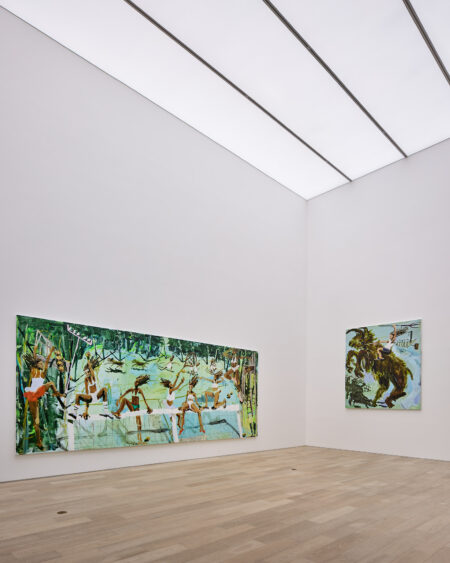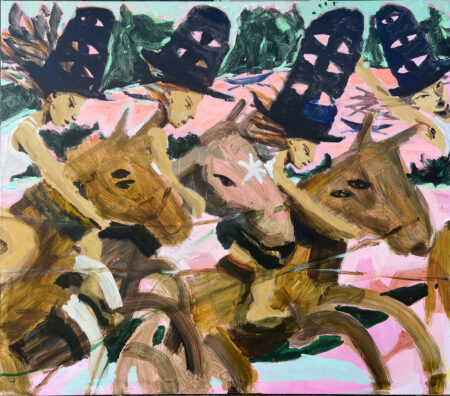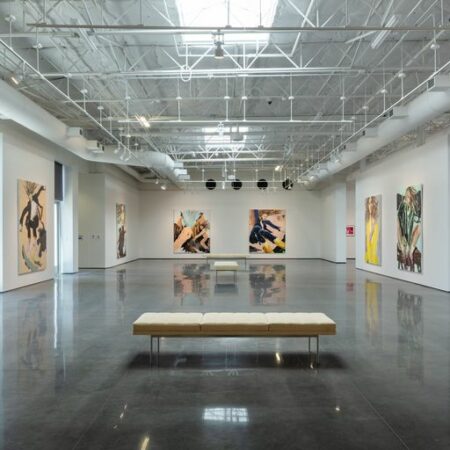BRIAN DILLON is UK editor of Cabinet magazine and Tutor in Critical Writing at the Royal College of Art.
He writes regularly for frieze, Artforum, the Guardian and the London Review of Books.
STOWED AWAY – BRIAN DILLON
‘A frequent image: that of the ship Argo (luminous and white), each piece of which the Argo- nauts gradually replaced, so that they ended with an entirely new ship, without having to alter either its name or its form.’ Roland Barthes, Roland Barthes (1975)
When does a thing stop being itself? When its component parts have all gradually been ruined and replaced by others, as in the case of the ship sailed by Jason and the Argonauts? When it has drifted so far from the time and place of its making and original use that it is no longer recognizable, even to those who once lived with it and loved it? When, very simply, its name has changed? What if we ask the same question of ourselves, or another person? Travel, we like to say, is a means of self-discovery; but it is a way of losing yourself too, and a way of inventing a new self, or finding (or hoping to find) the old. And what of the place discovered, left behind, or rediscovered later? Can we truly say that it is the same place in each instance?
These are familiar questions, and they are not best answered in the abstract. They arise out of, and require retrospective grounding in, the intimate details of specific histories, or perhaps fictions. Among the poetic complexities that Mie Olise’s recent work adds to this picture is the problem of a story that itself undergoes retelling at a geographic or historical distance. Is a fiction, let us say a novel, and one with substantial autobiographical content, the same story when it has brushed up against new facts about other lives, becoming implicated in real life? Or has it somehow been transformed or translated? Aksel Sandemose’s 1933 novel A Fugitive Crosses His Tracks is one such conundrum. Sandemose’s hero, Espen Arnakke, flees his native town of Jante on the island of Mors – the town is a thin disguise for the real Nykøbing Mors – and stows away to Newfoundland, where he is rescued and hidden in an attic, kills a man, and realises that he has not in fact escaped himself nor the crushing insular culture from which he thought to have absconded.
By the time that Mie Olise was growing up on the island of Mors, Sandemose’s novel was thoroughly connected with the past and present of the place. So that when the artist’s father built a ship (in 1978, before moving to the island) it was quite natural to call it Espen Arnakke in homage to the writer and his fictional creation, and their real and imagined acts of rebel- lion, flight and adventure. Olise ’s project of tracking down that ship (it was sold in 1986) and its intermediate owners is no exercise in nostalgia or simple reconstruction of a resonant story that connects to a venerable literary precursor. Instead, it is an attempt to restage precisely the relays and slippages and ambiguities of history and storytelling alike. The work that emerg- es from this historical excursion is itself full of junctions and conjunctions, departures and arrivals: in short of transitions between places and times, but also between fact and fiction, history and imagination. But the confusions of truth and myth are already there, for example, in the Jante Law described by Sandemose: a set of repressive attitudes outlined in his novel but which subsequently took on a real sociological significance when applied to small communi- ties where anonymity is impossible and eccentricity or conspicuous ambition frowned upon.
Consider too Olise ’s dual reconstruction of the railway station at Millertown Junction in New- foundland and the abandoned station on Mors. The first is an actual point on the trajectory
of Sandemose’s return home, subsequently mythologized as part of his fictional reworking of his travels; the second was already a sort of fantasy from the outset, built at one end of an 800- metre railway line that the author worked on when he returned to the island of his birth, but which was never finished. (For many years Sandemose tried to write a novel entitled The Silent Station, in which he describes a station with two ship masts, but never succeeded; instead, it became an image in his novel, Brudulje.) Olise’s railway station is an image of the transmis- sion of such stories, of the space and time in which narratives and memories may be passed on, and may take unpredictable turns or wait for an unforeseen span of time before making their connection. (As is the case, for instance, with Arthur Ludlow, whose father William had helped and housed the fugitive Sandemose in 1916, and who at the age of 96 recounts the story at last to another Mors native and adventurer of sorts.) If the railway station is a sort of ruin, it is also, like the ambiguous reconstruction of ship-berth (in Olise ’s project Shipsearching, exhibited at Honor Fraser Gallery in LA in 2011) and attic room, a node or relay point in the movement or ramification of stories, memories, fictions and documentary.
This body of work is scattered with ruins, and we have been in that sort of territory before in the art of Mie Olise. Her earlier paintings of imaginary ruins avoided the now popular theme of the Modernist ruin in favour of frail and frequently domestic buildings that resembled in many cases stranded, half-derelict ships. (In the case of her 2007 painting, Cargo Ship in a Tree, this became quite explicit. But it is true of others too, in which ramshackle wooden huts might be upturned boats, their hulls now turned to attics in which a fleeing stowaway might take refuge.) Olise ’s ruins were not so much images of dereliction, decay or mourning, as instances of refuge or sanctuary: fragile dwellings and hideaways. There are real ruins, too, in the videos that she made at Pyramiden, an abandoned Soviet mining facility on the Svalbard archipelago in Norway. Here, what haunts the empty precincts of the mining town is the presence of a real community, which we may imagine as having its own problematic rules or laws, just like Jante.
Mie Olise’s is an art of metaphor – that sounds like an imprecise judgment, but it takes on a specific and suggestive sense if we understand the term quite literally. As figure, trope or nar- rative scheme, metaphor is first and foremost a kind of imaginative movement; the transition or translation of one thing into another, its ambiguous casting in other terms. Metaphor in other words is a type of travel; the Greek metapherein simply means to move across. And travel – with its accompanying scenography of escape, endurance, refuge, exile, nostalgia and return – is among the most fundamental narrative means by which art and literature have represented the transformation of a person or a people. All of this is in play, though cast in the most inti- mate as well as global or universal terms, in the work of Mie Olise, who has turned stories of vagrant and recursive travel into objects and atmospheres of haunted and fragile import.


